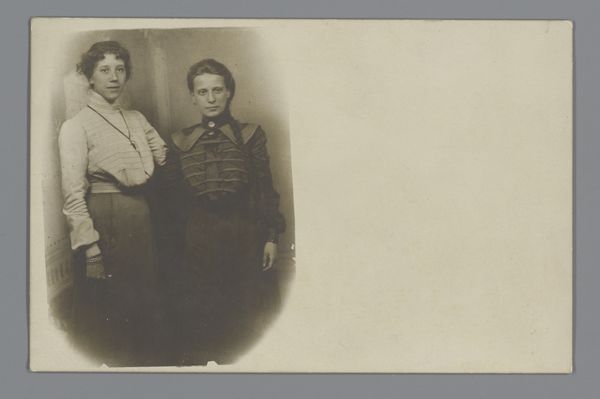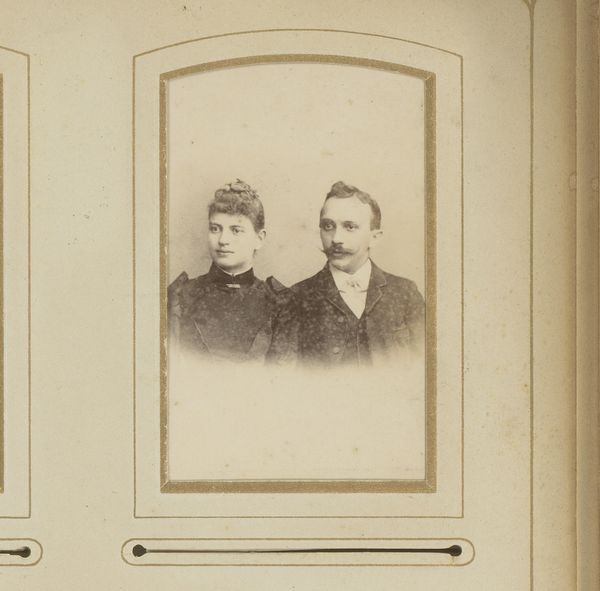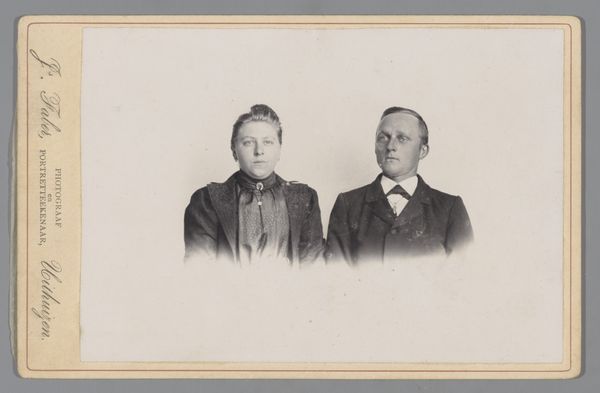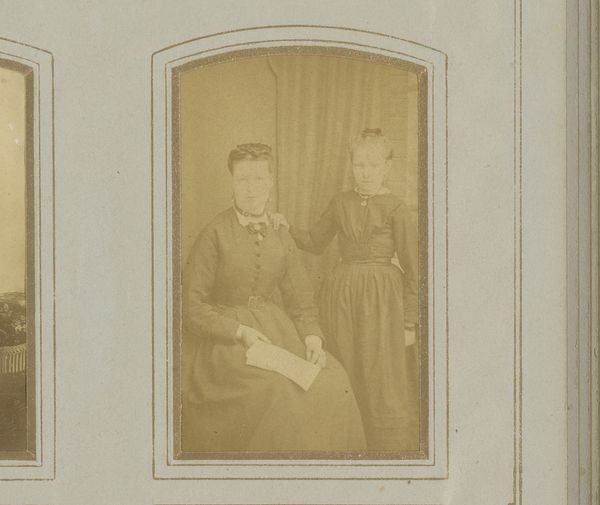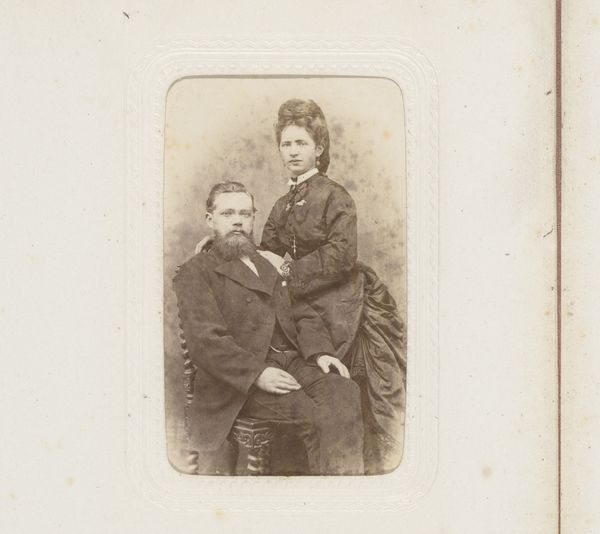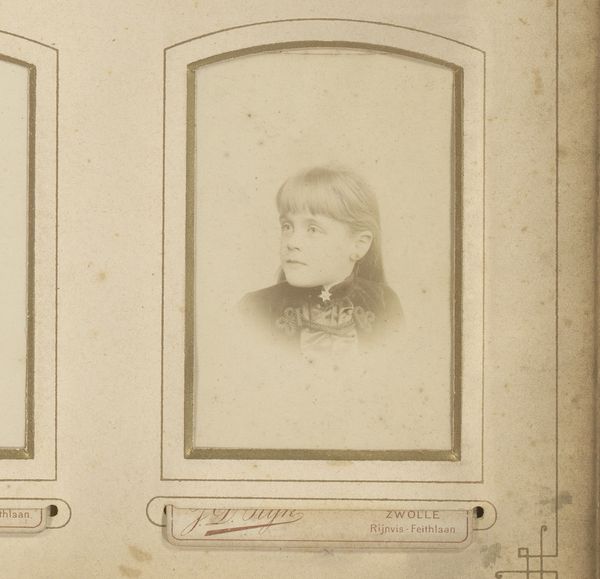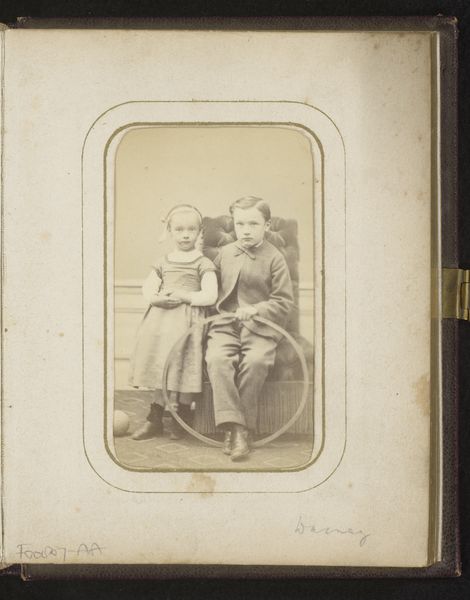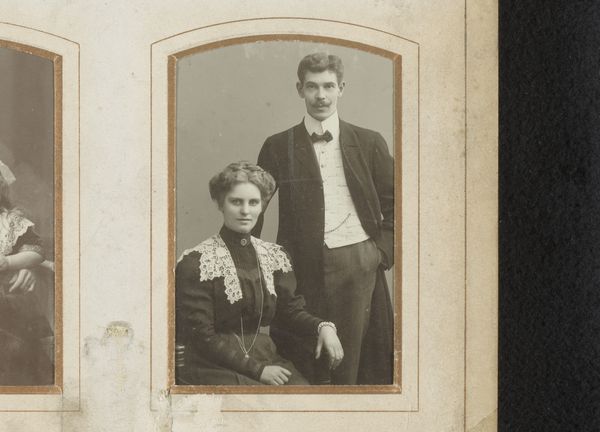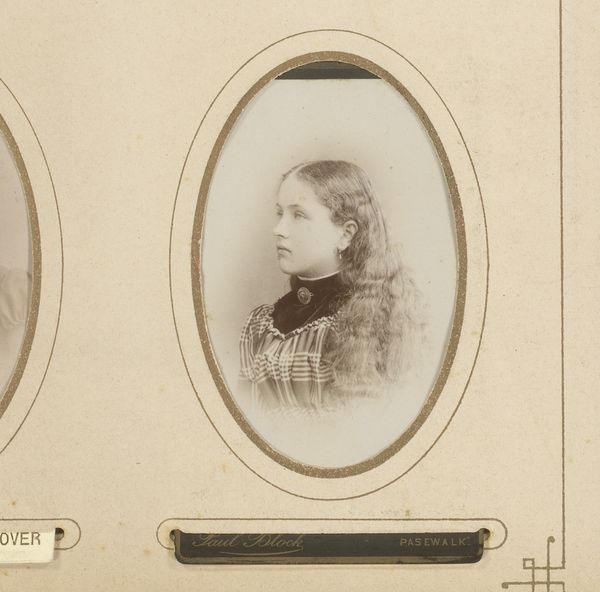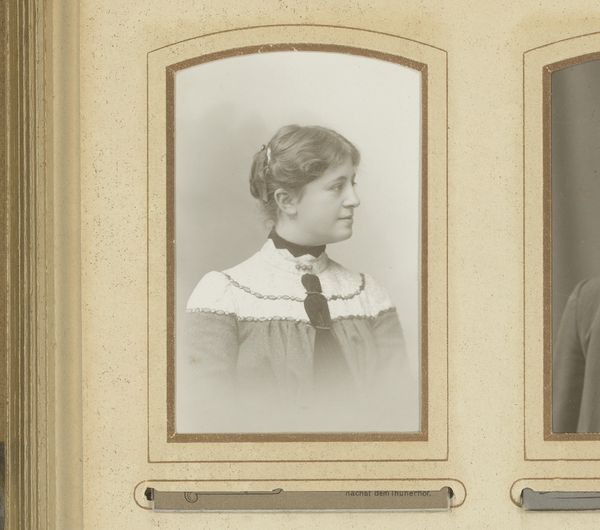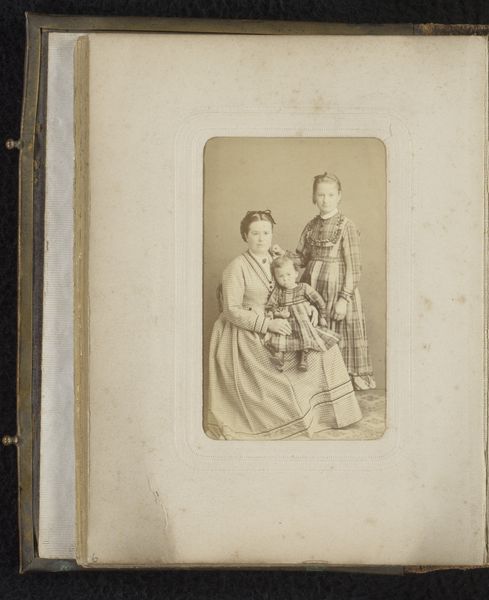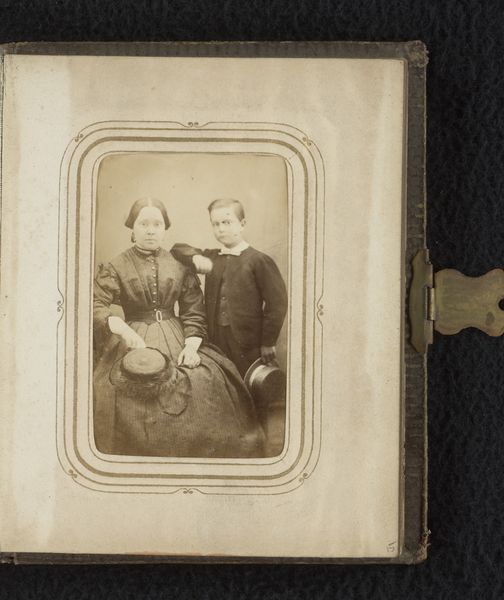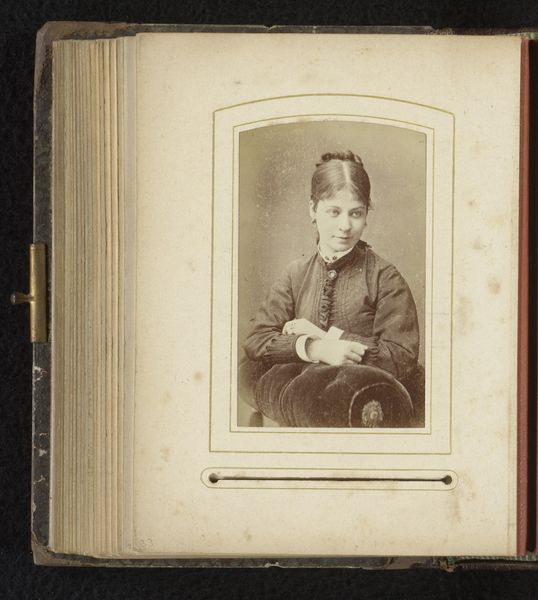
photography, albumen-print
#
portrait
#
aged paper
#
toned paper
#
tea stained
#
photography
#
genre-painting
#
albumen-print
#
realism
Dimensions: height 84 mm, width 51 mm
Copyright: Rijks Museum: Open Domain
Curator: Looking at this weathered albumen print titled "Portret van een zittende man en vrouw," created between 1870 and 1890 by William Gee Parker, one is immediately struck by its spectral quality. Editor: It does have a faded, almost dreamlike aura. The aged paper and tea staining seem to imbue it with a deep sense of history, doesn’t it? Like we're peering into a past both intimate and remote. Curator: Exactly. It's imperative we look into photography's evolution alongside evolving social norms and power dynamics during the Victorian era. How were notions of class and gender negotiated and represented in these formal portrait sittings? The woman’s position beside the man hints at the social constraints she faced, but it's how she negotiates it with her appearance that offers avenues for empowerment. Editor: Absolutely. And it’s fascinating how Parker used albumen printing. The meticulous preparation of the light-sensitive emulsion from egg whites…it speaks volumes about the labor invested in early photographic processes. Curator: Precisely. It prompts consideration about how gender and class may have factored into the laborious process. It offers valuable insight into the lives of its sitters and challenges preconceived narratives. What kind of stories do you see within it? Editor: I wonder about their clothes – the textures of his heavy coat versus the apparent lightness of her dress, the buttons, the clasps... these small details tell me something about the material culture of the time. Also, the limited tonal range, that sepia palette – what implications were at play regarding photography at this stage in production and making do with little technological means? Curator: Thinking about realism and genre-painting trends in that time period, this kind of imagery can become a portal into reflecting on how marginalized communities gained visual representation, influencing societal consciousness. How do we approach those historical depictions today with sensitivity and a desire for equity? Editor: I’m left considering the alchemy of photography – the materials, the process, and the ways early photographers pushed against its constraints, even with modest methods available to them. Curator: It leaves us grappling with crucial dialogues on visibility, power, and historical memory, doesn't it?
Comments
No comments
Be the first to comment and join the conversation on the ultimate creative platform.
